Read Time: 6 Minutes Subscribe & Share
Stumbling Across A Mystery
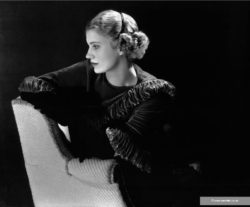 How could I not have heard or read about Lee Miller? We went by chance to an exhibit of her photographs at the Palazzo Pallavicini in Bologna. The description of Lee Miller described her as “Beautiful and charming but also determined, cultured, daring. A true non-conformist female icon, Elizabeth “Lee” Miller lived several different professional lives: from modelling for Vogue (in 1927) to being a muse for artists like Man Ray, Picasso (who painted her in six paintings), Roland Penrose (she was his second wife) and Jean Cocteau (in whose film she appeared). And then also a portraitist, a war reporter and even a cook.” I was intrigued by the last three words.
How could I not have heard or read about Lee Miller? We went by chance to an exhibit of her photographs at the Palazzo Pallavicini in Bologna. The description of Lee Miller described her as “Beautiful and charming but also determined, cultured, daring. A true non-conformist female icon, Elizabeth “Lee” Miller lived several different professional lives: from modelling for Vogue (in 1927) to being a muse for artists like Man Ray, Picasso (who painted her in six paintings), Roland Penrose (she was his second wife) and Jean Cocteau (in whose film she appeared). And then also a portraitist, a war reporter and even a cook.” I was intrigued by the last three words.
A Life Too Startling To Be Fiction
To briefly encapsulate the astonishing, brutal, captivating life she led would be difficult, but here goes: She was raped at the age of 7, from which she contracted gonorrhea and had to suffer the trauma of pre-antibiotic treatment. In her teens she was expelled from several schools and saw her boyfriend die from drowning. Then, in a bizarre moment, Condé Nast, the owner of Vogue, pulled her back from being hit by a truck. He offered her a modelling contract (who wouldn’t have, she was stunning). She was wildly successful until Edward Steichen took some modelling photos of her, and she became the face of Kotex. In the 1920s no woman’s face advertised a product for menstruation, only “discreet drawings and descriptions.” Her modelling career in the US was not so discreetly ended, as no fashion house dared to to have the Kotex girl model their styles.
contracted gonorrhea and had to suffer the trauma of pre-antibiotic treatment. In her teens she was expelled from several schools and saw her boyfriend die from drowning. Then, in a bizarre moment, Condé Nast, the owner of Vogue, pulled her back from being hit by a truck. He offered her a modelling contract (who wouldn’t have, she was stunning). She was wildly successful until Edward Steichen took some modelling photos of her, and she became the face of Kotex. In the 1920s no woman’s face advertised a product for menstruation, only “discreet drawings and descriptions.” Her modelling career in the US was not so discreetly ended, as no fashion house dared to to have the Kotex girl model their styles.
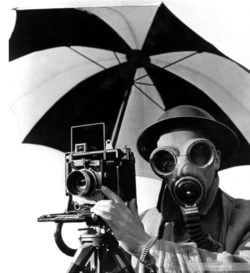 With a determination that was to be a Lee Miller hallmark, she moved to Paris to study photography and, with the door opened by Edward Steichen, studied, ate, and slept with Man Ray. She credits him with teaching her how wonderful food and wine were, and that meals were treasured times. Lee returned to New York after her relationship with Man Ray had become toxic and promptly opened a photography studio with her brother during the Great Depression. Lee once again turned this period into a financial success, using her talents in set design, photography and lighting along with her Paris cachet and connections. She then married a wealthy Egyptian who had fallen for her in Paris. This brought additional adventures of the kind one can enjoy with a large stash of cash. She was reunited with her friends from Paris and met some new ones – including Roland Penrose, Max Ernst and Pablo Picasso — and they all felt the darkness from the Spanish Civil War and the shift in the German political scene. Her marriage with Aziz Eloui Bey ended predictably. She had been forbidden to hang any
With a determination that was to be a Lee Miller hallmark, she moved to Paris to study photography and, with the door opened by Edward Steichen, studied, ate, and slept with Man Ray. She credits him with teaching her how wonderful food and wine were, and that meals were treasured times. Lee returned to New York after her relationship with Man Ray had become toxic and promptly opened a photography studio with her brother during the Great Depression. Lee once again turned this period into a financial success, using her talents in set design, photography and lighting along with her Paris cachet and connections. She then married a wealthy Egyptian who had fallen for her in Paris. This brought additional adventures of the kind one can enjoy with a large stash of cash. She was reunited with her friends from Paris and met some new ones – including Roland Penrose, Max Ernst and Pablo Picasso — and they all felt the darkness from the Spanish Civil War and the shift in the German political scene. Her marriage with Aziz Eloui Bey ended predictably. She had been forbidden to hang any 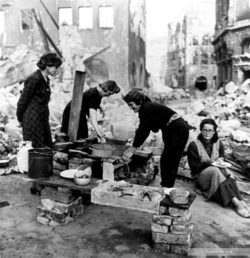 modern art in downstairs rooms of their home in Egypt, and had not been allowed to choose any furnishings.
modern art in downstairs rooms of their home in Egypt, and had not been allowed to choose any furnishings.
Lee moved in with Roland Penrose in London just as the Blitz started. As an American, she did not have clearance to work at any real job. Her letters (of which she made copies to keep) make fascinating reads. When Fortnum & Mason declined to sell her a one-of-a-kind display spice hamper, they asked why she was so determined to have it. She explained that when cities are under siege, the defenders end up eating rats, and if that was her fate during the war, at least hers would taste good! Unable to persuade Fortnum, Lee learned to create feasts out of what she could forage. She also finally became an accredited War Correspondent for Vogue after she had submitted a smashing piece with photographs on Edward R. Murrow. She documented women in the war effort – women sailors, searchlight operators and Land Girls – with marvelous photos and text. And yes, she landed with the Normandy Invasion too, probably the only female war correspondent reporting from combat zones, and was put under house arrest after her scoop on the siege of St. Malo. Still, she managed to cover Liberation Day in Paris, Belgium and Luxembourg. One of my favorite photos, which I purchased from the site, is the one with champagne and gasoline buried in snow on the balcony of her room in a Paris hotel. The archives offer a mesmerizing gallery of her photography as well as images of some of her colleagues.
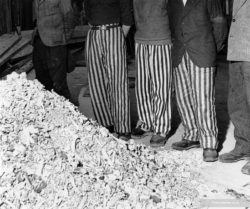 Reading her letters and viewing her photographs when she entered the concentration camps with Patton’s army is mind boggling, along with the now iconic photo of her sitting in Hitler’s bathtub (in his secret Munich apartment, to which she had been given the address and key). And of course she went to his ransacked lair at Berchtesgaden and stole a a silver serving tray with the AH initials and swastika engraved on it. She used it for many of her dinner parties. She was quite a celebrity, justifiably after the war, but the nightmares of what she had photographed and written about haunted her, and she sought alcohol for relief. After a post-war victory journey to the US where she caught up with friends who had fled Europe during the war, she became pregnant, married Roland Penrose, returned to England and buried all of her correspondence and thousands photographs in her attic. She never talked about this period of her life again.
Reading her letters and viewing her photographs when she entered the concentration camps with Patton’s army is mind boggling, along with the now iconic photo of her sitting in Hitler’s bathtub (in his secret Munich apartment, to which she had been given the address and key). And of course she went to his ransacked lair at Berchtesgaden and stole a a silver serving tray with the AH initials and swastika engraved on it. She used it for many of her dinner parties. She was quite a celebrity, justifiably after the war, but the nightmares of what she had photographed and written about haunted her, and she sought alcohol for relief. After a post-war victory journey to the US where she caught up with friends who had fled Europe during the war, she became pregnant, married Roland Penrose, returned to England and buried all of her correspondence and thousands photographs in her attic. She never talked about this period of her life again.
“I keep saying to everyone, ‘I didn’t waste a minute all my life’ – but I know myself, now, that if I had it over again, I’d be even more free with my ideas, with my body and my affection.”
A Chance Attic Encounter
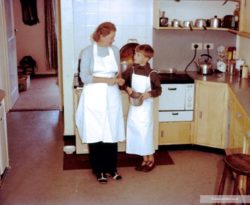 Lee, with Roland Penrose, created a new life with a robust farm property in Sussex. She reinvented herself as a cook who introduced post-war Britain to cooking meals to enjoy with friends. Her meals were as spectacular as her life. She wrote menus and recipes for Vogue and entered countless recipe contests, many of which she won. And like her hidden life before the end of the war, Lee kept meticulous notes and photos of her culinary creations. Her son’s memory of her as mother was undoubtedly not untroubled. He fortunately had a Nanny, Patsy, who was very much a part of his life as a surrogate mother and at the same time a kitchen godsend to Lee. And in the end, she successfully beat back the depression (read post traumatic stress syndrome) and alcoholism before she died in 1977. But for her child, he really never knew his mother. It was in cleaning out the attic of Farleys House where he resides that he found her unbelievable collection. Antony Penrose, and his daughter Ami Bouhassane have separately and together organized this attic trove of art, diaries and recipes into a biography, a gallery and museum. Farleys House is not only a museum to his parents’ artistic output, but also an ongoing gallery with workshops, an archive which organizes exhibits such as the one I saw in Bologna, plus cooking classes in Lee Miller’s kitchen with recipes from her collection.
Lee, with Roland Penrose, created a new life with a robust farm property in Sussex. She reinvented herself as a cook who introduced post-war Britain to cooking meals to enjoy with friends. Her meals were as spectacular as her life. She wrote menus and recipes for Vogue and entered countless recipe contests, many of which she won. And like her hidden life before the end of the war, Lee kept meticulous notes and photos of her culinary creations. Her son’s memory of her as mother was undoubtedly not untroubled. He fortunately had a Nanny, Patsy, who was very much a part of his life as a surrogate mother and at the same time a kitchen godsend to Lee. And in the end, she successfully beat back the depression (read post traumatic stress syndrome) and alcoholism before she died in 1977. But for her child, he really never knew his mother. It was in cleaning out the attic of Farleys House where he resides that he found her unbelievable collection. Antony Penrose, and his daughter Ami Bouhassane have separately and together organized this attic trove of art, diaries and recipes into a biography, a gallery and museum. Farleys House is not only a museum to his parents’ artistic output, but also an ongoing gallery with workshops, an archive which organizes exhibits such as the one I saw in Bologna, plus cooking classes in Lee Miller’s kitchen with recipes from her collection.
A Memoir and a Cookbook
 We’re including two unusual recipes (for us, anyway). The first is one of the many pantry items she made and stashed for her weekend parties.
We’re including two unusual recipes (for us, anyway). The first is one of the many pantry items she made and stashed for her weekend parties. 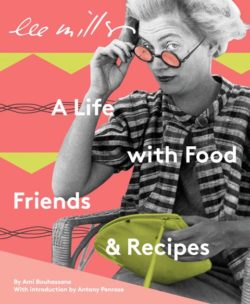 Roux made in an oven is ingenious: use it to make a bechamel sauce for lasagna, a base for a cheese souffle, or a veloute for a soup. The second is a soup that I fantasize she must have devised during the Liberation of Paris.
Roux made in an oven is ingenious: use it to make a bechamel sauce for lasagna, a base for a cheese souffle, or a veloute for a soup. The second is a soup that I fantasize she must have devised during the Liberation of Paris.
“Cookbooks are my favourite bedtime reading, sometimes I consult as many as fifty books for one recipe before I throw them aside and go off on my own”. And since they are my favorite bedtime reading too, I bought the book beautifully organized by her grand-daughter, “Lee Miller A Life With Food, Friends & Recipes” It is by my bed. And there will be a Travel Alert Post in Kitchen Detail next year as I am definitely going to Farleys House.
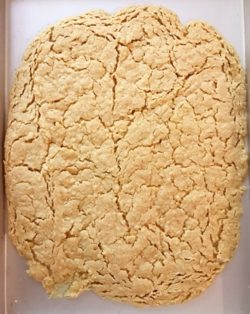

- 1 cup (220gr) salted butter
- 2 cups (250gr) all purpose flour
- Preheat oven to 325-350F (160-175C)
- In a good heat-conducting suacepan or saute pan, work the butter and flour together over low heat until you form a smoth paste.
- Spread across an ungreased baking sheet, and bake until it is a light gold color.
- Allow to cool and crumble it into a container with a lid.
- Keep in refrigerator for tuture use.
- Thin sauce - 2oz (57gr) of mixture to 1 pint (570ml) of liquid
- Medium sauce - 3oz (85gr) of mixture to 1 pinte (570ml) of liquid
- Thick suace - 4oz (113gr) of mixture to 1 pint (570ml) of liquid
- Once you have weighed out the amount of the roux base, add it to a sauce pan large enough to hold the added one pint of liquid.
- Heat the base over medium low heat and it will "melt" and then start adding your liquid, whisking so that the two are combined into a smooth sauce.
- Proceed with what ever additions are needed for your particular recipe.
- You can add any combination of liquid - I sometimes use half stock and half milk and then add some wine or white balsamic vinegar to brighten the flavor.
- Use your roux base for any bechamel, cheese soufflé base,mornay or even espagnole sauce.
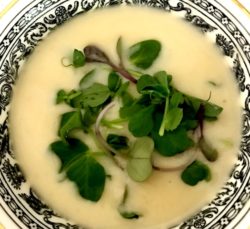

- 3 cups (700 ml) chicken stock
- 1 medium onion finely sliced
- 1 large bay leaf
- 2 tsp (10gr) cornstarch added to 2 tbs (30ml) cold water to make a a paste
- 7oz (200gr) ripe Camembert cheese
- 5 egg yolks
- 1/2 (118ml)cup dry white port
- 1 cup (240ml) hot water
- 1 bottle non vintage Champagne
- Chervil sprigs, watercress or flaked toasted almonds
- 1 tbs (14.3gr) cognac
- Sea salt and freshly ground white pepper to taste
- Tabasco sauce or cayenne pepper to taste
- Saute the onion slices in 2tbs (28gr) butter until transluscent.
- Simmer the onion and bay leaf in the chicken stock for 15 minutes..
- Stir while you add the cornstarch paste and then bring this just to the boiling point..
- Remove bay leaf and pour mixture into a blender or food processor and purée..
- Cut the rind off the cheese and cube the Camembert round..
- Add the cubed Camambert to the blender or food processor, then purée again.
- When the cheese is absorbed, add the egg yolks, one at a time and pulse before adding the next one.
- After the yolks are blended into the soup base, add the port and briefly mix.
- At this point your can refrigerate the mixture covered in the fridge until you are ready to serve.
- At serving time, return the soup base to a saucepan and heat it gently, pouring in a bottle of Champagne, whisking the mixture so that it smooth with this addition.
- (I use about 3/4 bottle and a half cup of hot water)
- Season with salt and pepper, cayenne or Tabasco to your taste and add the cognac, stirring one final time.
- (I prefer Cholula hot sauce to Tabasco)
- Garnish each serving with a chervil sprig or a watercress leaves or flaked, toasted almonds
- ( I have used a generous spoonful of spicy micro greens).
- This is a subtle soup,and really reflects the post WWII era of entertaining. You can accompany it with fancy caviar or salmon toasts.

Kitchen Detail shares under the radar recipes, explores the art of cooking, the stories behind food, and the tools that bring it all together, while uncovering the social, political, and environmental truths that shape our culinary world.




Nancy: I LOVE your blog! Question:: the recipe for Hill Country Peach Cobbler: the ingredients include use of white sugar and light brown sugar. However, in the instructions there is no mention of when to mix in the white sugar. I have re-read that recipe numerous times, but do not see when the white sugar is to be added. Help! Sure hope that you are enjoying summer. Warm regards.
Hi Gwenn,
We are delighted that you love the blog and thank you for spreading the word about KD! Glad you caught that omission too and I have corrected it. The white sugar is added with the flour etc. Let us know when you make it.
Best regards,
Nancy